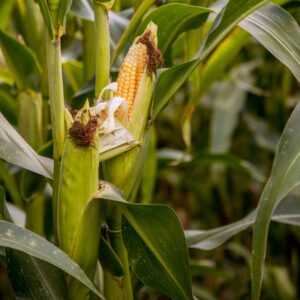During a BEE verification you will have to submit physical proof (share certificates, EE report, proof of purchases) of activity, spending and contributions in the five elements of empowerment.
OWNERSHIP
How does land restitution influence the Ownership Scorecard?
Land restitution has two implications for the AgriBEE Scorecard:
- Enterprises (farms) with gazetted land claims are exempt from the Ownership element. If only a percentage of the land is subject to a claim, the exemption is proportional.
- The Sale of Assets vehicle may apply to land sold to ‘Black’ Farmers in exchange for Ownership points. An additional proviso is that a 30% target is met instead of 25% as in all other instances where Sale of Assets applies.
How is Ownership measured?
Ownership as a Priority Element is subject to a 40% Sub-minimum requirement. This is in relation to Net Value.
There is an allowance for the transfer of land ownership to B-BBEE Beneficiaries, with or without compensation, which can be used as the measurement criterion for Ownership points. If 30% of land ownership is transferred to ‘Black’ People, full recognition for Ownership is possible under certain conditions.
What vehicles are available to drive Ownership?
‘Black’ Ownership is recognised through:
- Direct shareholding in the hands of ‘Black’ People;
- Private Equity Funds;
- Sale of Assets through qualifying transactions;
- Employee Ownership Schemes;
- Share Equity Schemes; and
- Joint Venture collaboration with ‘Black’ Farm Workers and other ‘Black’ Entrepreneurs.
Upon meeting specific criteria, a multinational may apply for an Equity Equivalent Programme that allows them to claim Ownership points by investing in B-BEEE programmes in lieu of selling shares.
True or false – “I must give equity to ‘Black’ Shareholders in exchange for Ownership status and points?”
This statement is false; the word ‘give’ does not appear in any of the Codes. It is every organisation’s prerogative to decide whether to donate or sell shares either at market value or a discounted rate.
MANAGEMENT CONTROL
How is Management Control measured?
Management Control targets should be achieved within the ambit of the Employment Equity Act of 1998. The objective of this element is to increase the representation of ‘Black’ People, ‘Black’ Women and ‘Black’ Designated Groups in the sector.
A Large Enterprise must use the overall demographic representation of ‘Black’ People as defined in the Regulations pertaining to the Employment Equity Act and Commission on Employment Equity Report. Furthermore, a Large Enterprise that has operations in one province must use the relevant provincial demographic representation of ‘Black’ People. However, an enterprise that has operations in more than one province must adhere to the national demographic representation of ‘Black’ People.
The Management Control criteria are broken down as follows:
- Executive Management;
- ‘Black’ representation in Executive Management;
- ‘Black’ Women representation in Executive Management;
- ‘Black’ representation at Senior, Middle and Junior Management; and
- ‘Black’ Women representation at Senior, Middle and Junior Management.
All other key principles of Statement 200 of the Generic Codes not addressed in this statement are applicable.
SKILLS DEVELOPMENT
The skills development element of the generic codes of good practice was changed in 2019. Sector codes are suppose to align with the generic codes on or before 1 June 2020. The AgriBEE council is currently reviewing the process.
Most important changes include:
- an allowance for bursaries at higher education institutions, of 2,5% of the annual remuneration cost incurred;
- the provision that 50% of expenditure must be incurred on unemployed people has been removed. This implies that all skills development expenditure can now be spend on employees.
How is Skills Development Measured?
Skills Development expenditure for ‘Black’ People is measured at 6% of the total payroll, with additional points allocated for persons with a disability. A total of 40% of the points available are awarded for ‘Black’ People entering learnerships, internships or apprenticeship agreements.
Commercial viability in agriculture demands sustained productivity, high levels of entrepreneurship, long-term commitment, resources and skills.
‘Black’ Designated Groups are targeted under this element. The focus must be placed on the development of core identified scarce or critical skills as determined by the SETA. Interventions that address identified skills shortages must account for 85% of the value of the actual contribution.
All other key principles of Statement 300 of the Generic Codes not addressed in this statement are applicable.
SUPPLIER AND ENTERPRISE DEVELOPMENT
The generic changes (1 December 2019) include some changes to procurement recognition with more emphasis being placed on Black owned businesses.
How is Supplier Development and Enterprise Development measured?
The measurement for these sub-elements is based on how an organisation supports Start-up Enterprises, EMEs or QSEs in becoming sustainable. Points can be optimised through contributing 3,5% of Net Profit After Tax (NPAT) by providing grants, loans or other resources such as facilities and/or equipment.
Preferential Procurement targets may be phased in over a four-year period, provided that an organisation is prepared to contribute 3% instead of 2% towards Supplier Development for years one through to four.
The following non-exhaustive list outlines credible Supplier Development and Enterprise Development contributions:
- Investments in Beneficiary entities;
- Guarantees given or securities provided on behalf of Beneficiaries;
- Facilities made available to Beneficiary entities;
- Grant contributions to a Beneficiary;
- Direct costs incurred through assisting and hastening the development of a Beneficiary;
- Overhead costs directly attributable to contributions;
- Preferential credit terms granted to a Beneficiary ;
- Preferential terms issued in respect of supplying goods and services to a Beneficiary;
- Contributions made to settle service costs relating to operational or financial capacity or efficiency levels of a Beneficiary;
- Discounts allowed for the acquisition and maintenance costs associated with a grant to a Beneficiary for franchise, license, agency, distribution or other similar business rights;
- The creation or development of capacity and expertise for a Beneficiary required to manufacture or produce goods or services previously not manufactured, produced or provided in South Africa. However, this must have been accounted for in Government’s economic growth and local Supplier Development policies and initiatives;
- Facilitating access to credit for a Beneficiary without access to similar credit facilities through traditional means, owing to a lack of credit history or collateral;
Providing training or mentoring by suitably qualified individuals to Beneficiary entities, which will assist the Beneficiary entities to increase their operational or financial capacity; - The maintenance of an Enterprise Development and Supplier Development unit which focuses exclusively on the support of a Beneficiary or candidate Beneficiary;
- New projects promoting beneficiation for the benefit of an Enterprise Development or Supplier Development Beneficiary;
- The provision of preferential credit facilities to a Beneficiary may constitute a contribution. Examples include without limitation:
1. Provision of finance to a Beneficiary at lower than commercial rates of interest;
2. Relaxed security requirements or absence of security requirements for a Beneficiary unable to provide security for loans;
3. Settlement of Beneficiary accounts over a shorter period. This addresses standard payment terms and provided that the shorter period is no longer than 15 days; and
4. The training and mentoring of Beneficiary communities. Such contributions are measured by quantifying the cost of time, excluding travel, spent in carrying out such initiatives.
How is Preferential Procurement measured?
The majority of this element measures procurement with ‘Black’-owned and ‘Black’ Women-owned organisations, that are EMEs and QSEs. A phase-in period is an option provided that additional resources are allocated to Supplier Development.
The following must form part of an organisation’s Total Measured Procurement Spend (TMPS):
All goods and services procured are defined as:
- Cost of sales;
- Operational and capital expenditure;
- Monopolistic procurement;
- Third-party procurement;
- Labour brokers and independent contractors or any outsourced labour expenditure;
- Pension and medical aid contributions payments made to any post-retirement funding scheme or a medical aid or a similar medical insurer by an organisation on behalf of an employee, excluding any portions of such payments which are a contribution to a capital investment of an employee. The scheme or insurer must issue a certificate dividing between the capital investment portion and the balance to establish the amount that is measurable in the Total Measured Procurement Spend;
- Trade commissions;
- Empowerment related expenditure; all goods and services procured in carrying out B-BBEE. The TMPS does not include the actual contribution portion recognised under section 2 and 3 of statement 500, but does include any expenditure incurred in facilitating those contributions;
- Imports; and
- Intra-group procurement goods and services procured from subsidiaries or holding entities. A B-BBEE Certificate or Affidavit must represent the organisation supplying goods and/or services.
The following are permissible exclusions from the TMPS:
- Taxes;
- Salaries, wages, remunerations and emoluments; and
- Pass-through third-party procurement. All procurement from a third-party or a client that is recorded as an expense in the third-party’s or client’s annual financial statements, but is not recorded as such in an organisation’s annual financial statements.
Further reference:
SOCIO-ECONOMIC DEVELOPMENT
How is Socio-Economic Development measured?
AgriBEE has 15 points allocated for this element for spending 1.5% NPAT.
A detailed agreement must be entered into and accepted by all parties. Proper records of all interactions and meetings are encouraged.
To optimise the points on this element, priority should be given to implementing income-generating socio-economic initiatives that create a sustainable livelihood for Beneficiaries.
Tips to remove the sting from B-BBEE compliance Essential to a favourable B-BBEE outcome are strategy, planning and providing relevant evidence. Take the following pointers into account and leave as little to chance as possible.
- Ensure that your chosen verification agency is accredited by SANAS, the only accredited body authorised to accredit verification agencies. SANAS places a very high level of integrity on the verification analysts.
- Have a full comprehension of the requirements applicable to your organisation.
Address ‘low-hanging fruits’ first, which are classified as :
1. Spend with organisations that are >51% ‘Black’-owned; where possible allocate that spend to Enterprise Development or Supplier Development Beneficiaries.
2. Ensure supplier B-BBEE Certificates are presented in the correct format.
3. Optimise the 15 points available for SED.
4. Analyse the Skills Development spend. Ensure that people with disabilities are included.
5. Ensure proper due diligence on complex transactions entered into, especially in terms of Ownership. Gain a second opinion for peace of mind. Issues such as an Ownership transaction must be adequately planned, and professional advice must be obtained to ensure that a smooth transition takes place.
Further reference:
Find “Brochures” under “Publications” at www.bbbeecommission.co.za/brochures/. There is a brochure explaining Socio-Economic Development further.






